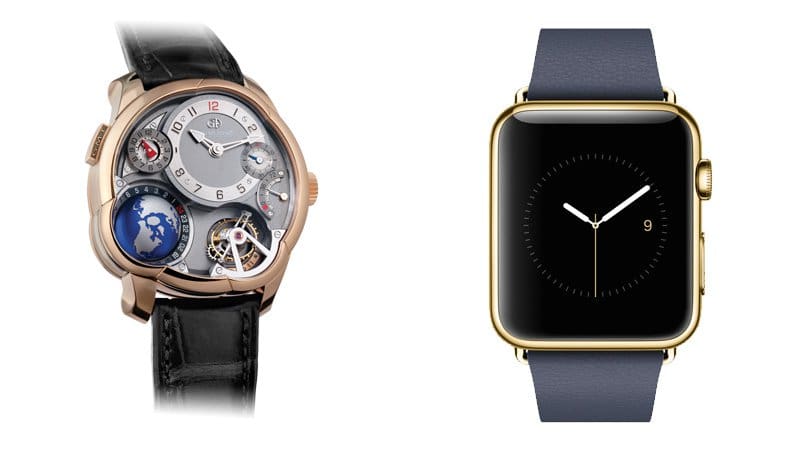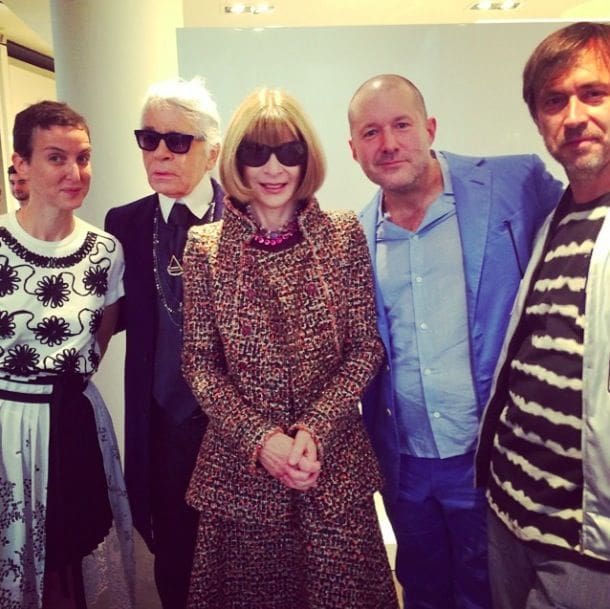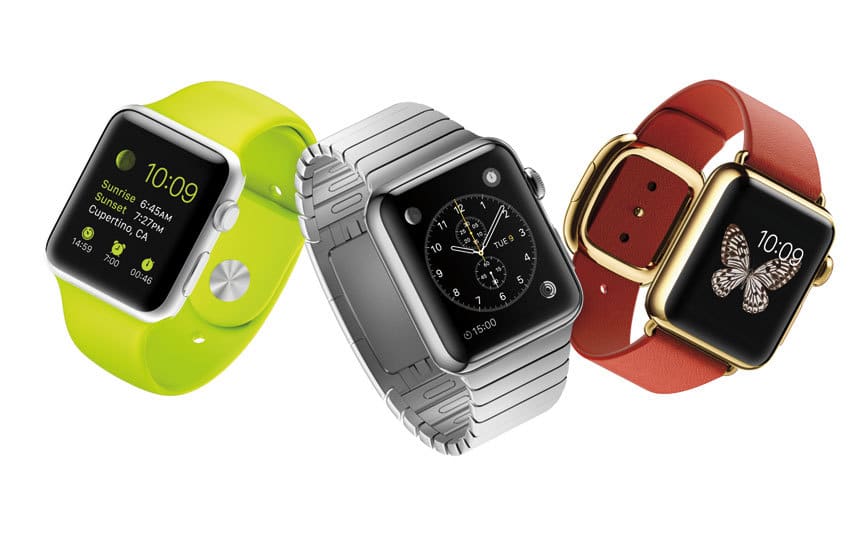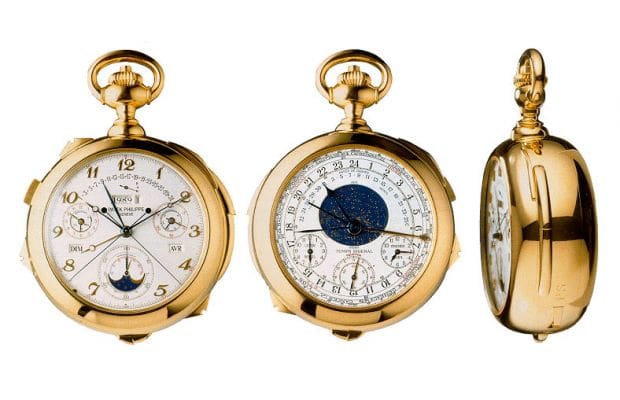What – if any – impact will the Apple Watch have on the mechanical watch industry?

What – if any – impact will the Apple Watch have on the mechanical watch industry?
Left: Greubel Forsey, Right: Apple iWatch
As fashion week drew to a close in Paris, the eyes of the world turned to Colette, as the Parisian temple of perennial cool became the first place the Apple Watch has been publicly displayed outside Cupertino. Anna Wintour stopped past to pose alongside Karl Lagerfeld and Jonathan Ive, as did Suzy Menkes and Anna Della Russo.
The crowd that gathered outside the Rue Saint-Honoré mecca of cool were largely unaffected by the presence of fashion heavyweights. Decidedly less causal than the regular clients at Colette, their style was much more Mark Zuckerberg than the recently appointed Apple designer Marc Newson.
Either the rest of the fashion set were still at the shows or didn’t think that the first public outing of the Apple Watch was worth getting out of bed for.
A sentiment shared by the Swiss watch industry. Jean-Claude Biver, head of LVMH’s watch division, went so far as to call the debut disappointing, dismissing the design as too feminine and lacking aesthetic tension. Stephane Linder, CEO of Tag Heuer, lamented its lack of innovative features, suggesting it was little more than a sleeker version of what is already on the market.
“ Jean-Claude Biver, head of LVMH’s watch division, went so far as to call the debut disappointing ”
It’s all a bit disappointing really. First the NYTimes reported that design chief Jonathan Ive, “in bragging about how cool he thought the iWatch was shaping up to be, gleefully said Switzerland is in trouble.” According to the newspaper, “Ive chose a much bolder term for “trouble” to express how he thought the watchmaking nation might be in a tough predicament when Apple’s watch comes out.”
Then Bloomberg’s Businessweek ran the headline; Time’s Up, Switzerland: Here Comes Apple’s Watch days ahead of the much-hyped launch. Expectations and tensions continued to build, as the world waited with baited breath for the revolution that would disrupt the Swiss watch industry forever.
Then there was a notable fizz across the Internet when the less-than-revolutionary device was revealed. The war between Apple and the Swiss Watch Industry never got off the ground.

Sarah Andelman, Karl Lagerfeld, Anna Wintour, Jonathan Ive, Marc Newson at Colette, Paris, for the first public viewing of the Apple Watch
Maximillian Busser, founder of MB&F;, remained similarly unperturbed. “Schumpeter’s theory assumes that each major innovation will disrupt the existing products and brands and hence fuel the growth of the economy. The iPhone killed – amongst others – Nokia, the CD player and the traditional camera, so the question of what will happen to watches is legitimate.”
“But all the industries, which fell to the smartphone, were competing on practical purposes (ie. phone calls, listening to music, taking photos). The mechanical watch industry was thrown into crisis by quartz forty years ago, and came back with a vengeance, but completely void of its initial practical purpose, which was giving time.”
“A mechanical movement is 10,000 times less precise than quartz. So if a mechanical watch is not there to give time, why are people crafting and buying them? Probably 80% because it gives them some kind of status, and then 20% because it is a work of art and a celebration of craftsmanship. Can the Smartwatch offer any of those qualities? I seriously doubt it.”
“ All the industries that fell to the smartphone were competing on practical purposes ”
As Businessweek perceptively pointed out, “time-telling smartphones are everywhere, yet since 2000, Swiss watchmakers have more than doubled exports, valued at more than 20 billion Swiss francs ($21.3 billion) in 2013. In 2000 mechanical watches accounted for 8 percent of the watches leaving Switzerland; in 2013 they represented 27 percent.”
The overall sentiment from CEO’s in Switzerland is that ‘smart’ watches and mechanical watches are much more likely to coexist than compete. And, if anything, will create positive wristwatch resonance with the millennial generation that has eschewed such products in favour of the iPhone and its counterparts.
Indeed “Apple’s hope is that an entire generation of under-thirties who abandoned the wristwatch will take up the smart bracelet challenge,” confirms Suzy Menkes. “For Jony Ive’s team, the ticking heart of this timepiece is that it is not purely functional but becomes part of each person’s identity.”

Which brings us to the crux of the issue. Realistically, what is the Apple device? Should it really be called a watch? Or – much like the iPod before it – is the Apple Watch much more colourful ‘connected accessory’ than it is timekeeper?
Sure it tells the time, but this is merely one feature on a very long list of functions. Will the Apple Watch client be a watch enthusiastic, luxury consumer, Apple fanatic or one of the fashion set looking to make a personal statement?
Watchmakers are sure that whoever this client is, they are not buying this product for the longevity associated with mechanical watches. Front of mind when we spoke with Haute Horlogerists is shelf life, which (as yet) has not been publicly estimated by Apple.
Stephen Forsey, co-founder of Greubel Forsey, believes that “it’s an interesting design in term of wearable technology but we don’t feel the emotion or the culture and character that is found within a fine mechanical watch.”
“ If a mechanical watch is not there to give time, why are people crafting and buying them? ”
“The strong technological backbone suggests that one big challenge will be its durability over time. Can it be repaired? A fine high-end mechanical watch has the potential to last for hundreds of years.”
“I am intrigued to see who buys the gold iWatch,” echoes Maximillian Busser. “The lifespan of these products is 18 to 24 months maximum, and then the company’s programmed obsolescence strategy will kick in with the new version, which will immediately kills the previous.”
“Instead these products will probably be chucked into the trash like the 70’s electronic watches that no one can repair anymore. This would explain why Apple is recruiting talent from the fashion industry. Their goal will probably be to make it a high-end fashion statement that is discarded as fast as shoes, clothes or bags, when the next trend kicks in.”
Effectively, the Apple Watch is something one is unlikely to see at auction 100 years later, fetching the prices – or esteem – commanded by brands like Patek Phillippe or Audemars Piguet. And realistically, the collectors that fuel both new and auction sales at the top of the pyramid are wealthy enough to sustain both their Haute Horlogerie habit alongside an Apple Watch curiosity.

Patek Phillipe’s Henry Graves Supercomplication sold at auction in 1999 for $11 million
It’s unlikely that the privileged few able to collect the world’s most complex timepieces will ever have to choose.
The segment of consumers who are forced to choose may be the one segment where Apple could gain some ground. $349 won’t buy you much in terms of a luxury branded watch from Switzerland, but it will bring you some status and cache at Apple. As Max Busser explains, “if I was a watch manufacturer retailing under $1,000, which is therefore not about status or craftsmanship, I would be terrified.”
How sales of the device will actually perform remains to be seen. Despite the lukewarm reaction from consumers and the watch industry, analysts forecast that 30 million units will be sold in 2015. At the entry price of $349, this could mean revenues over 10.4 billion. Approximately half the sales of the Swiss Watch industry, which exports over 20 billion Swiss Francs worth of Swiss-made watches per year.
“ The lifespan of these products is 18 to 24 months maximum ”
The message is clear, this first device by Apple is unlikely to directly compete with complicated, mechanical timepieces, as it stands. And Apple’s decision to launch the product publicly at Colette in Paris, during fashion week, suggests that the Cupertino giant isn’t really going after the watch crowd just yet.
Indeed the strategy so-far seems very much based around establishing the product as the must-have accessory, not the must have watch. And bringing in the tastemakers and fashion leaders who shape and edit the trends we see in the media, to help legitimately disseminate the brand and the product to the type of people who are thought to directly influence sales.
“The iWatch and all other smartwatches will soon become a part of our life for sure,” concedes Busser. “Monitoring our health, activating our household equipment, and who knows what else. The real question is therefore; will people start wearing two watches? one smart on one wrist? and one with real soul on the other? Because I don’t want to have to choose between them both.”
To further investigate timepieces on Luxury Society, we invite you to explore the related materials as follows:
– In Conversation With Maximilian Büsser, Founder, MB&F;
–5 Key Insights from The 2014 WorldWatchReport
–Rethinking Rarity In Haute Horlogerie: Greubel Forsey










